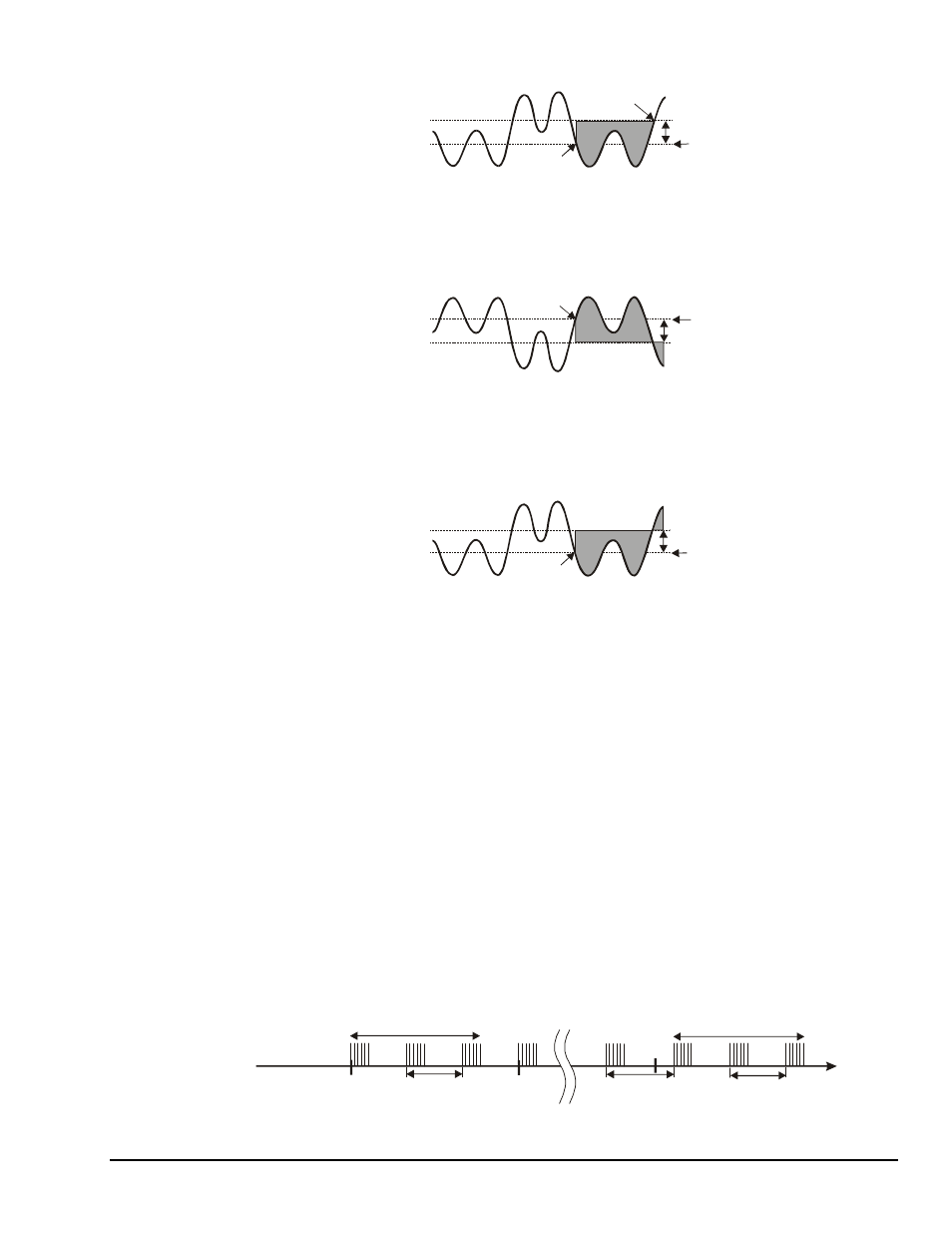Trigger latency & jitter – Measurement Computing WaveBook rev.4.0 User Manual
Page 59

WaveBook User’s Manual
06-08-01
WaveBook Operation Reference 4-13
Falling-Edge Trigger
Falling slope
Instantaneous duration
Edge initialization
H ys tere sis
Trig ger
Trig ger Lev el
N o Trigg er
This trigger is the reverse of the rising-edge trigger: the trigger becomes valid after the signal level has been
above the hysteresis range and then goes below the trigger level. This trigger becomes invalid whenever the
signal level goes above the hysteresis range. This prevents the false triggering that would occur with below-
level triggering if the signal was below the trigger level at the start of the acquisition.
Rising-Edge-With-Latch Trigger
Rising slope
Latched duration
Edge initialization
Trig ger L ev el
H ys te re sis
Trig ger
This trigger becomes valid like a rising-edge trigger: when the signal level goes above the trigger level after
first being below the trigger range. However, the rising-edge-with-latch trigger does not become invalid,
regardless of the signal level, until the acquisition is complete. Rising-edge-with-latch is used to trigger
after the channel has reached the trigger level, rather than just while the channel is above the trigger level.
Falling-Edge-With-Latch Trigger
Falling slope
Latched duration
Edge initialization
Trig ger Lev el
H ys tere sis
Trig ger
This trigger is the reverse of the rising-edge-with-latch trigger: the trigger becomes valid after the signal
level has been above the hysteresis range and then goes below the trigger level. The trigger remains valid
until the acquisition is complete.
Trigger Latency & Jitter
Trigger latency and jitter depend on the trigger source and the acquisition mode:
•
Trigger latency is the duration between the valid trigger and the start of the acquisition.
•
Trigger jitter is the variation of the latency, how much time the latency can vary from trigger to
trigger.
As discussed, WaveBook has post-trigger and pre/post-trigger acquisition modes. Post-trigger modes
(N-shot, N-shot with re-arm, and infinite-post-trigger) collect scans only after the trigger has occurred.
They are different from the pre/post-trigger mode that collects scans both before and after the trigger.
This difference affects the trigger latency and jitter.
In a post-trigger mode, WaveBook is not scanning while waiting for the trigger. Thus, it is free to respond
to the trigger as soon as it occurs. This minimizes the trigger latency and jitter.
In the pre/post-trigger mode, pre-trigger data is being collected while WaveBook waits for the trigger, and
WaveBook will not respond to a trigger until the current scan is complete. The pre-trigger scan period
separates the first scan after the trigger from the last scan before the trigger. All the scans (up through the
one immediately following the trigger) are collected at the pre-trigger rate; and all subsequent scans are
collected at the post-trigger rate. This preserves the integrity of the acquisition timebase as shown in the
figure below:
S tart
N o ac quis itions
be fo re s tart
P re -Trig ger
S ca n P erio d
P re -Trig ger Sc an C ou nt
P re /P os t-Tr ig g e r A cq u isition
Tim e
Trig ger
A rm e d
Trigger
P re -Trig ger
S ca n P erio d
P os t-Trig ger
S ca n P erio d
P os t-Trig ger S c an C ou nt
